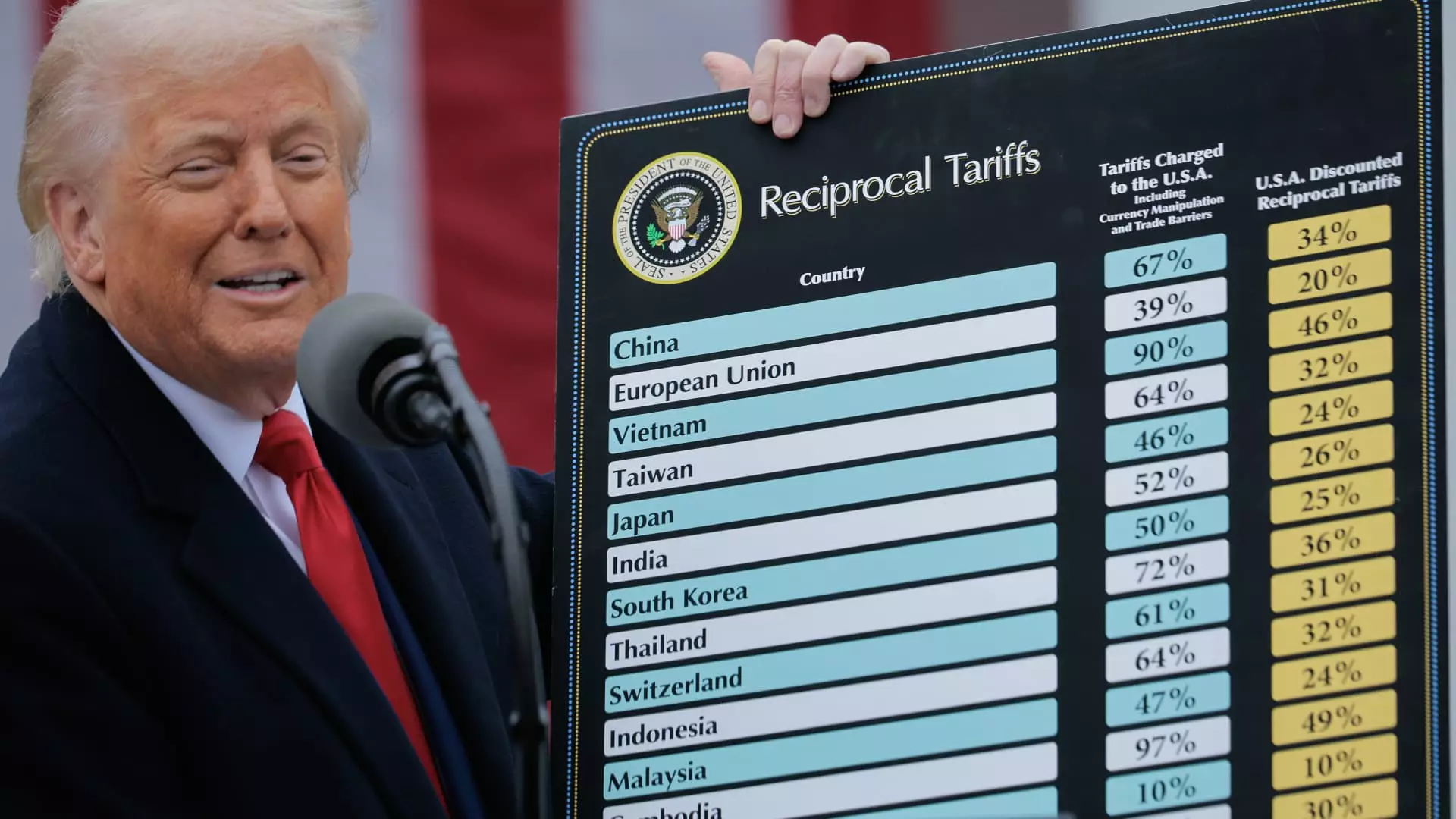The announcement of President Donald Trump’s “reciprocal” tariff policy sent shockwaves through economic circles and political arenas alike. This convoluted strategy introduced a uniform 10% tariff on nearly all countries while imposing draconian tariffs on specific nations like China, Vietnam, and Taiwan. At a Rose Garden ceremony, Trump paraded a poster laden with figures intended to bolster his case. However, the stark inconsistencies in those figures invite skepticism and raise essential questions. Is the administration deliberately misleading the public, or are they simply inept in their understanding of global trade dynamics?
The poster claimed astronomical tariffs imposed by countries on American goods—67% from China, 39% from the European Union, and 52% from India—figures that immediately raised eyebrows among economists. Such flagrant exaggeration casts a shadow on the Trump administration’s credibility. For instance, a report from the Cato Institute revealed the actual trade-weighted average tariff rates for these nations were astonishingly lower, exposing a disconcerting pattern: a misrepresentation of global economic realities.
An Alternative Reality Governed by Error
This approach to trade tariffs resembles an alternate reality where economic formulas somehow justifying Trump’s claims omit intricate components of international trade—particularly in services. By solely concentrating on goods and correlating these with the deficit, the administration overlooks the significant landscape of service trade. It’s a baffling tactic that disregards the fact that the U.S. economy thrives in the services sector.
The impact of such a policy runs deeper than immediate fiscal concerns; it signals a troubling trend in American policymaking. The misinformation undermines trust among global allies and further exacerbates tensions with trade partners. Tariffs, after all, aren’t merely tax hikes; they create ripples that affect supply chains, cost of living, and consumer prices across the board. By issuing tariffs derived from bad math, the Trump administration risks sowing chaos in economic relations, a precarious move that could leave everyday Americans feeling the pinch.
A National Conversation We NEED To Have
These allegations of incompetency raise a fundamental concern: Aren’t we—both citizens and lawmakers—entitled to a rational, thorough assessment of economic strategies before they are plied onto the public? The prioritization of political bravado over economic integrity reveals an unsettling narrative within modern governance. The discussions surrounding tariffs often veer into emotional territories driven more by political ambitions than by the hard, cold facts we need.
Moreover, it’s imperative that those in power foster an informed dialogue about the implications of tariffs, instead of resorting to piecemeal, populist tactics that tell only half the story. We deserve an administration that promotes economic strategies based on verifiable data rather than disingenuous provocations. As citizens, we must demand transparency and accuracy from our leaders, rejecting simplified narratives that gloss over the complexities of international trade partnerships.
In a polarized political climate, it is crucial to rise above partisanship and focus on sound economic principles. We stand at a crossroads where the nation can either uphold its economic reputation through rational policy-making or knock down walls of cooperation built over decades. The choice should be clear: we need honesty, rigor, and intelligence in how we navigate the intricate web of global trade.

